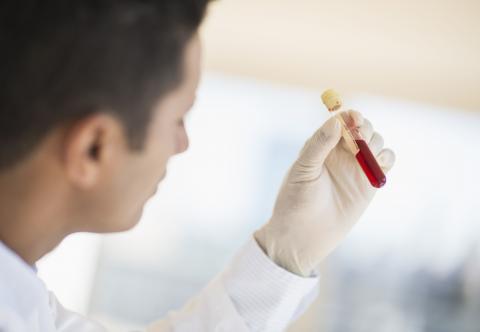Diagnosis of genetic diseases Part 3

To identify mutations specific genes used PCR polymerase chain reaction. Its essence consists in the extraction of DNA and repeatedly reproduce the researcher is interested in the plot. According to experts, the advantage of PCR is its high precision: here it is almost impossible to get a false positive result. The method is convenient because of the fact that research can be taken from any tissue of the body.
Prenatal and preimplantation diagnostics If you know that you have a family or her husband's family there were cases of hereditary diseases, of course, will want to figure out what the probability of them your children. Doctors often suggest expectant parents to make a prenatal diagnosis. But if a couple uses assisted reproductive technologies and preimplantation genetic diagnosis of the fetus (PGD).
PGD should be done if the mother's age exceeds 35 years, if the couple already had interrupt a pregnancy, and gave birth to children with hereditary diseases. Also doctors recommend to do PGD if the parents are carriers of a genetic disease. In this case, in the family there are cases of pathology, but the spouses themselves healthy. But the probability of disease in a child can reach 50%, and PGD helps to accurately determine this figure. The analysis is performed when the embryos obtained "in vitro", grows up to stage 6 or 8 cells 13.
Prenatal genetic diagnosis is performed when the child is still in the womb. To assume the presence of genetic abnormalities, the doctor may, on the basis of blood tests of the mother or on the results of the fetal ultrasound. Therefore, at the initial stage of pregnancy is screening: in her blood to determine the level of AFP, β human chorionic. If their concentration is different from the norm, the doctor recommends genetic testing of the child. To this end, a puncture, take the amniotic fluid and carry out karyotyping of the fetus. The only drawback of this method is the long period of waiting for the results.
If the latter is negative, then the woman just may not be able to make a decision about terminating the pregnancy. There is an alternative analysis of chorionic villi. It can be done at an early period, but the receipt of the material poses a threat to pregnancy. Recently another opportunity for the prenatal examination of a fetus noninvasive prenatal DNA test (NIPT test). In this case you need only the mother's blood. The test's accuracy is 99%, and you can do a survey on how the most common genetic pathology, and a complete study of the fetus.
The definition of the carrier Considering the types of inheritance of genetic diseases, we mention recessive fashion and inheritance, sex linked. A person can be healthy, but its genotype is present in this abnormal gene. This helps to identify the analysis on the carrier. Many do it at the planning stage of pregnancy, to calculate the probability of having a child with genetic diseases. For example, a disease like hemophilia, manifested only in males, women are not sick but may be carriers.
Therefore, women who have relatives with the problems of blood clotting, before conception it is recommended to do screening of heterozygous carriers to determine the probability of having a boy with hemophilia. Predictive genotyping And even if a person has no signs of hereditary diseases, it still can undergo genetic diagnosis. Why? The fact that only violations determined in the genes not all hereditary diseases. Many pathologies can be predisposition. diagnostics, or DNA identification, to identify it.
.png)